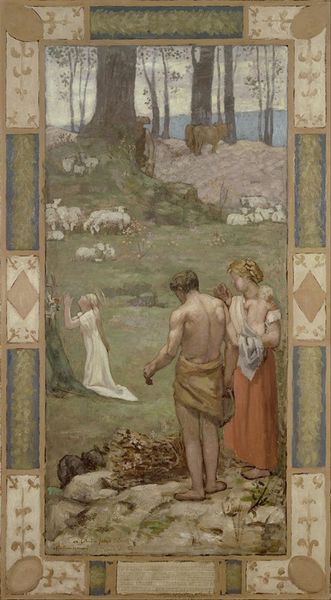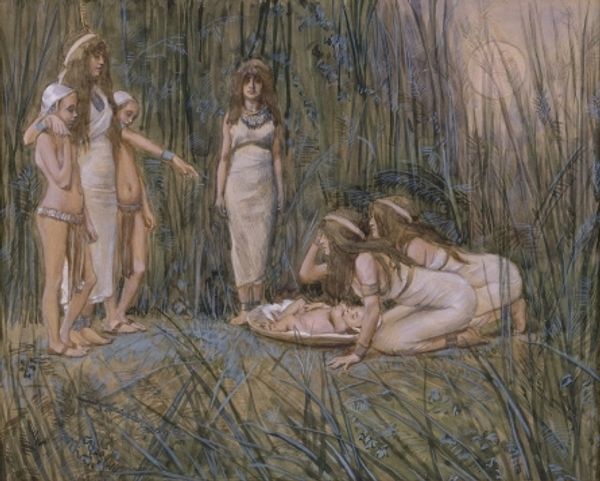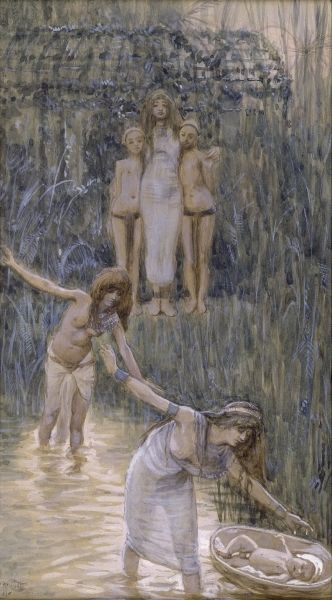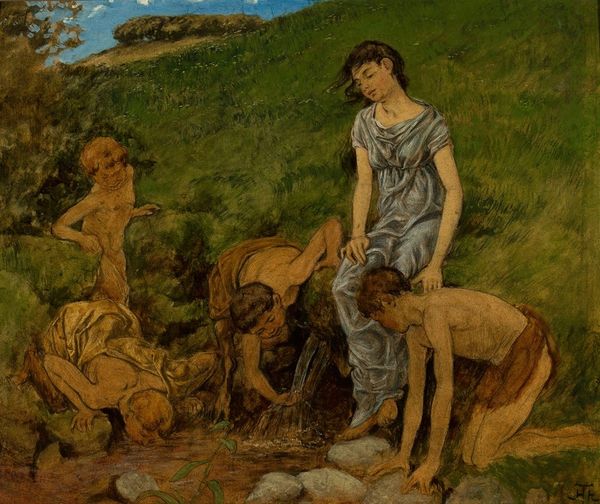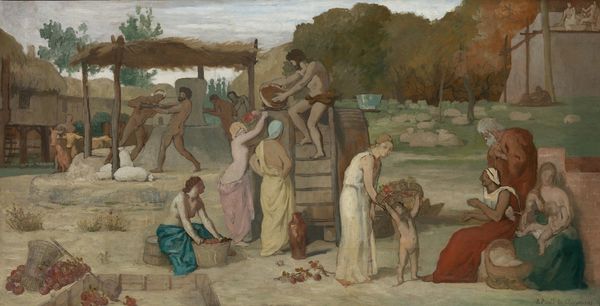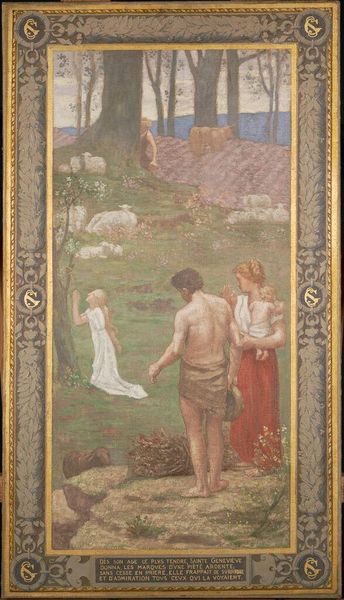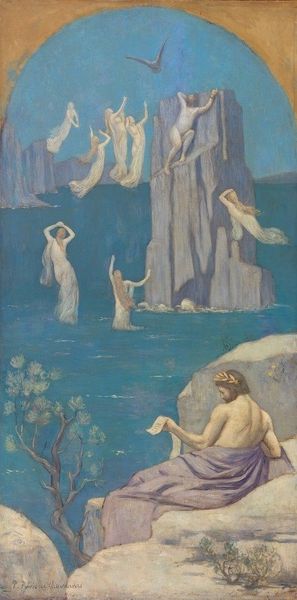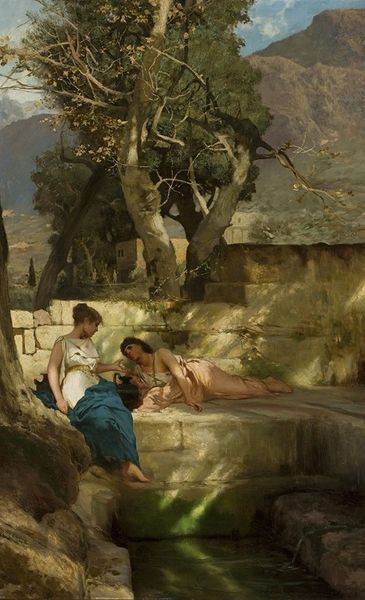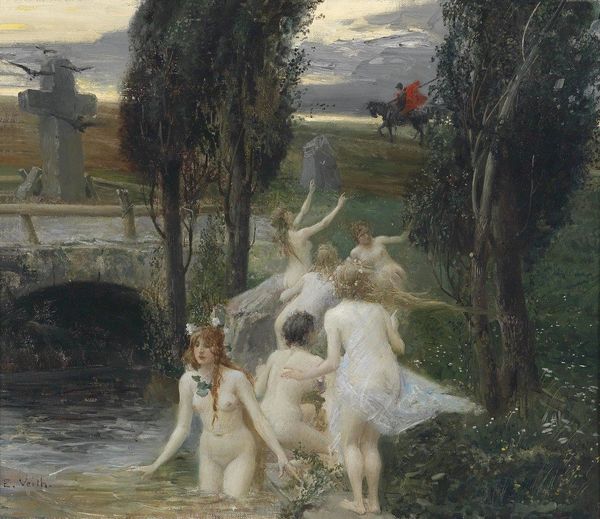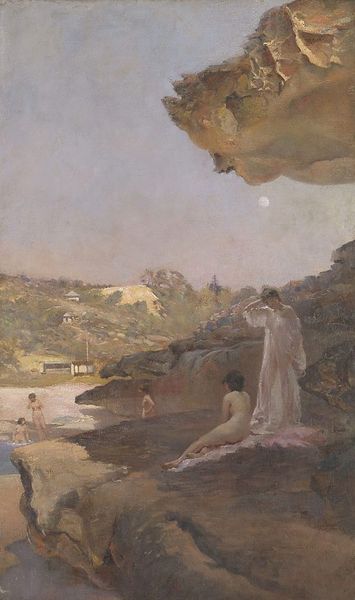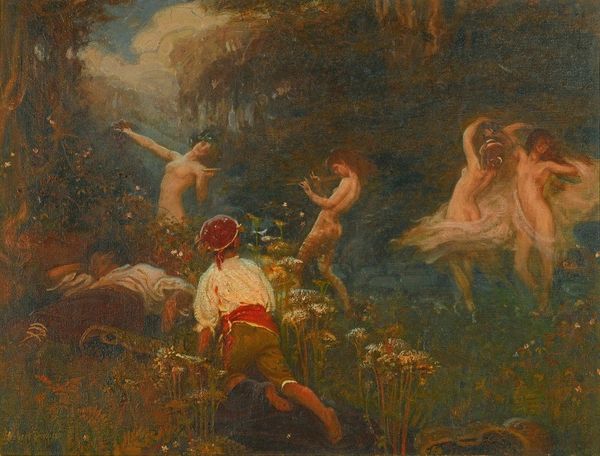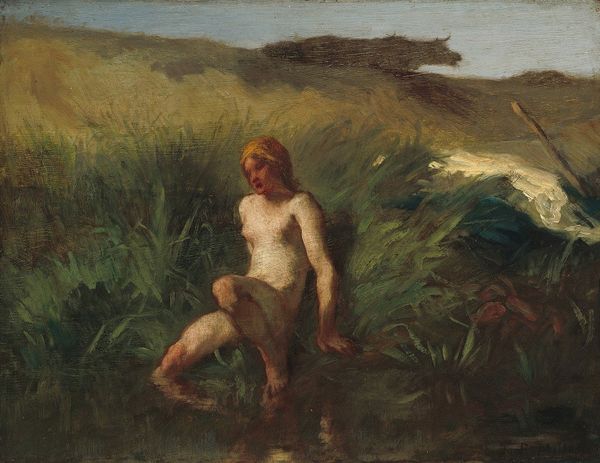
Copyright: Public Domain: Artvee
Editor: So, here we have Pierre Puvis de Chavannes’ *Sainte Geneviève enfant en prière* from 1877, made with oil paint – or possibly for a mural? It strikes me as unexpectedly earthy, even a bit gritty for a religious scene, particularly in the figures’ attire. What are your thoughts on it? Curator: From a materialist perspective, I am most interested in how Puvis de Chavannes subverts our expectations through his technique. Notice the muted palette and matte surface. It almost looks like a fresco. How do these material choices affect the viewer's experience and interpretation of this historical figure? Editor: Well, it definitely makes it feel less idealized and more…real. Almost like seeing a glimpse of everyday life instead of a saint's story. Curator: Precisely. And let’s consider the laborious process involved in creating this painting. Oil paint, pigments, the canvas itself, or if it’s for a mural, the wall preparation... these are all physical components tied to labour. In what way does the scale, materiality, and public accessibility, relate to Sainte Geneviève's role and image within Parisian society? Editor: Hmm, I hadn't considered that! So you are saying that even something like the *type* of paint or the size of the work might affect how people view her, and connect it to how art was made at the time? That’s really insightful. Curator: Yes. It reveals how deeply ingrained materials and their means of production are within social and historical contexts. Think about the availability and value placed on raw materials like pigments and how those might even control how Sainte Genevieve's story is consumed. How does art serve both religious and civic duty and display labour simultaneously? Editor: That's given me a completely new appreciation for considering art! I can see so many new areas to examine and questions that I can use in my own investigations. Curator: Absolutely. By interrogating the material conditions, we can unveil layers of meaning within seemingly straightforward historical paintings.
Comments
No comments
Be the first to comment and join the conversation on the ultimate creative platform.
